Take a Brief Look at the History of İzmir with the Golden Box!
How about taking a brief look at the history of İzmir before starting our tour? The Metropolitan Municipality has prepared an excellent presentation for you in the Golden Box that it has placed in the city center to preserve the history and carry it to future generations. If you want this history to be reflected in your lenses with a state-of-the-art presentation, our first stop will impress you greatly!
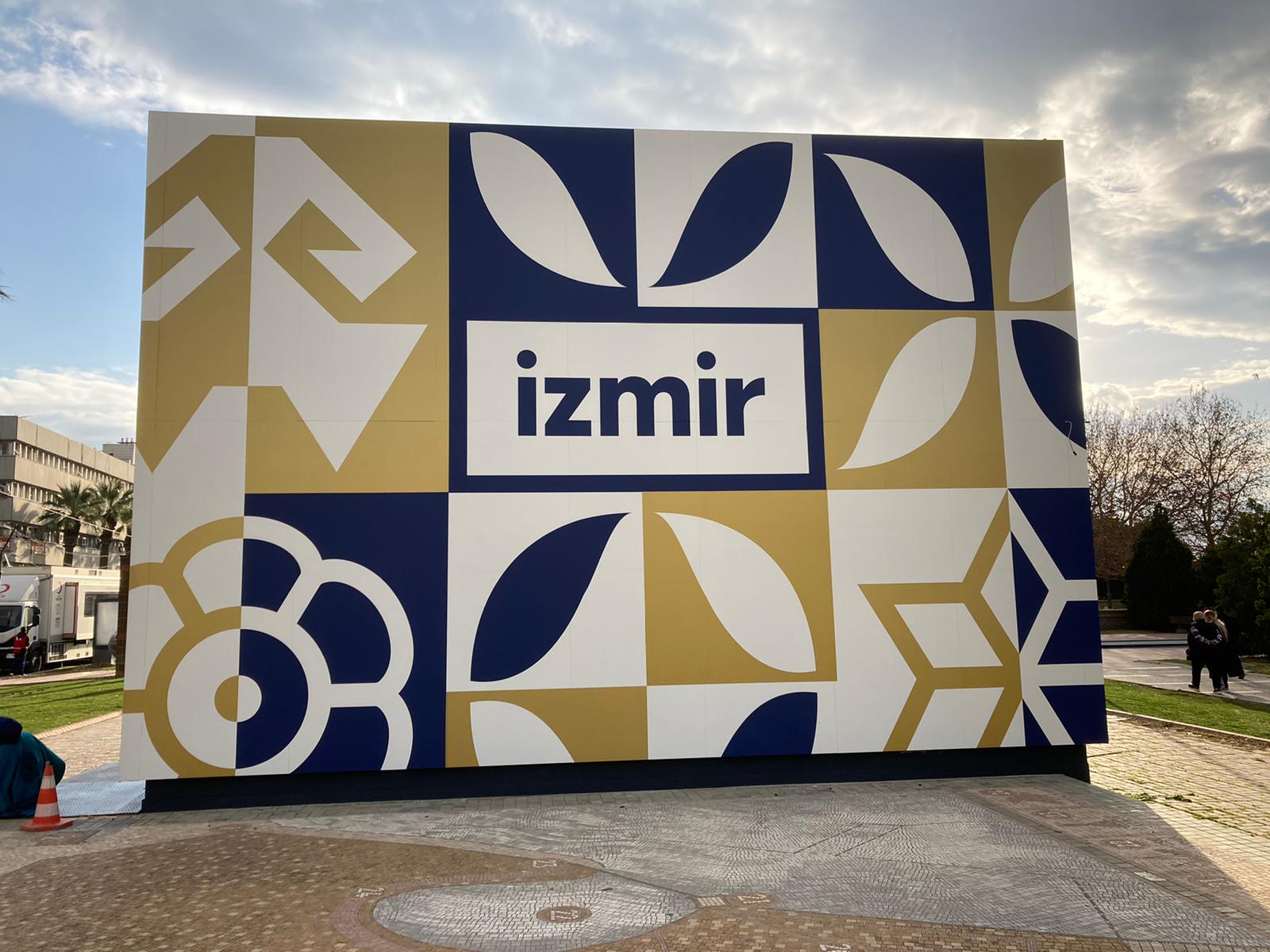
The first stop on our route is the Clock Tower, one of the favorite symbols of İzmir. One of Turkey's most monumental examples of the orientalist style, the Clock Tower, was designed by the architect Raymond Charles Péré. The Clock Tower was built in 1901 to commemorate the 25th anniversary of Abdulhamid II's ascent to the throne. The cherry and green marbles used in the tower were brought from Marseille. The sultan's tughra (signature), which adorned the windows of the building in the form of reliefs during the Ottoman Period, was replaced with the crescent-star reliefs in the Republican period. The canopy-covered fountains on all four sides of the Clock Tower, all cloaked with a dome, also rendered it an important water structure. The Clock Tower, where every local and foreign visitor stops by to take photos, is one of the most popular meeting points for the people of İzmir. Yet, mostly without the knowledge of the people of İzmir, a family has been maintaining the Clock Tower for three generations. Feti Pamukoğlu is the current family representative responsible for winding the tower's clock every six days.

Although the names also known as this small and elegant mosque of Konak, Hükümet, and Ayşe Hanım, it was first called Yalı (Waterfront) Mosque due to its proximity to the coast when it was built in the middle of the 18th century. It was commissioned by Ayse Hanım, the daughter of Derviş Agazade Mehmet Pasha, to serve as the masjid of the madrasah (theological school) built right next to the mansion she lived. At the end of the First World War, Architect Tahsin Sermet Bey carried out the restoration works of the mosque in line with the National Architecture Style. Hafız Mehmet Efendi first made the stunning tiles covering the mosque's facade. The tiles created in a thousand and one shades of blue were given their current form with the efforts of Hafız Mehmet Efendi's son Hakkı Çinicioğlu and ceramic artist Ümran Baradan.
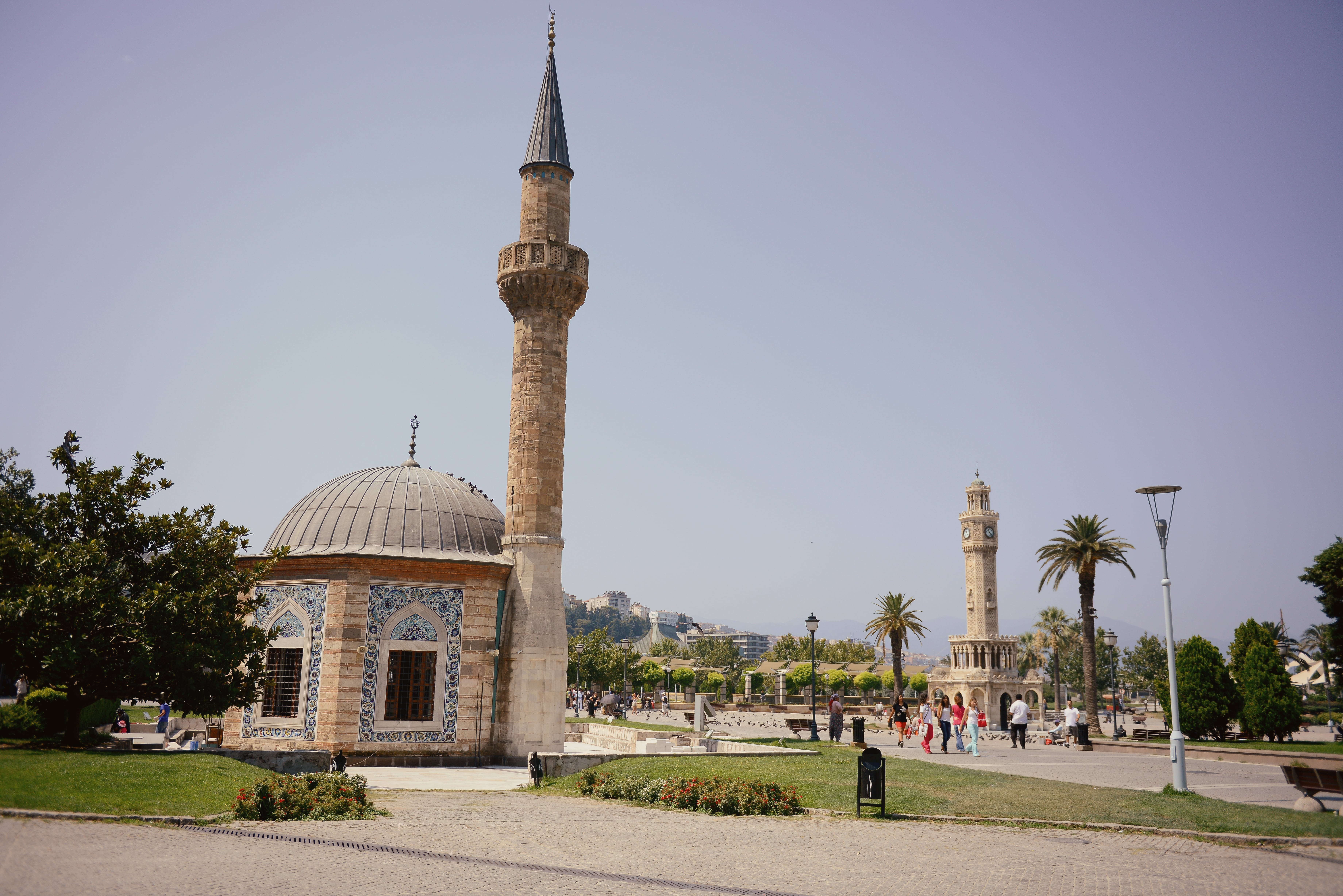
The İzmir State Opera And Ballet Elhamra Stage (The National Movie Theater)
The National Movie Theater is one of the most distinct examples of the First National Architectural Movement. Tahsin Sermet Bey was the movie theater architect commissioned by the İzmir National Library Association. It was completed in 1926 and started to operate under the name Elhamra Movie Theater. The Elhamra, which also included Mustafa Kemal Atatürk among its moviegoers, was the largest and most comfortable movie theater of the period, hosting many quality movies, theater plays, and concerts. The building, which has been hosting art lovers of İzmir as the stage of İzmir State Opera and Ballet since 1978, is worth seeing with its pointed arches, small domed towers, wide eaves, Rumi ornaments, and the tiles covering its facades.
The National Library is one of the most outstanding examples of the First National Architectural Movement and remains one of the most important libraries in Turkey. The idea of building a modern library in the city was first introduced in the early 1900s. To that end, "The Committee for the National Library and Promotion of Education" was founded by a handful of intellectuals. While the National Library first opened its doors to the public on July 6, 1912, at the Salepçioğlu (Ahmet Ağa) Mansion on Beyler Street, the National Library, designed by architect Tahsin Sermet Bey, was put into service with an opening ceremony on October 1, 1933, as part of the 10th-anniversary celebrations of the Republic. The National Library has striking exterior and interior architecture and has a rich archive, including a collection of manuscripts from the 12th - 19th centuries.
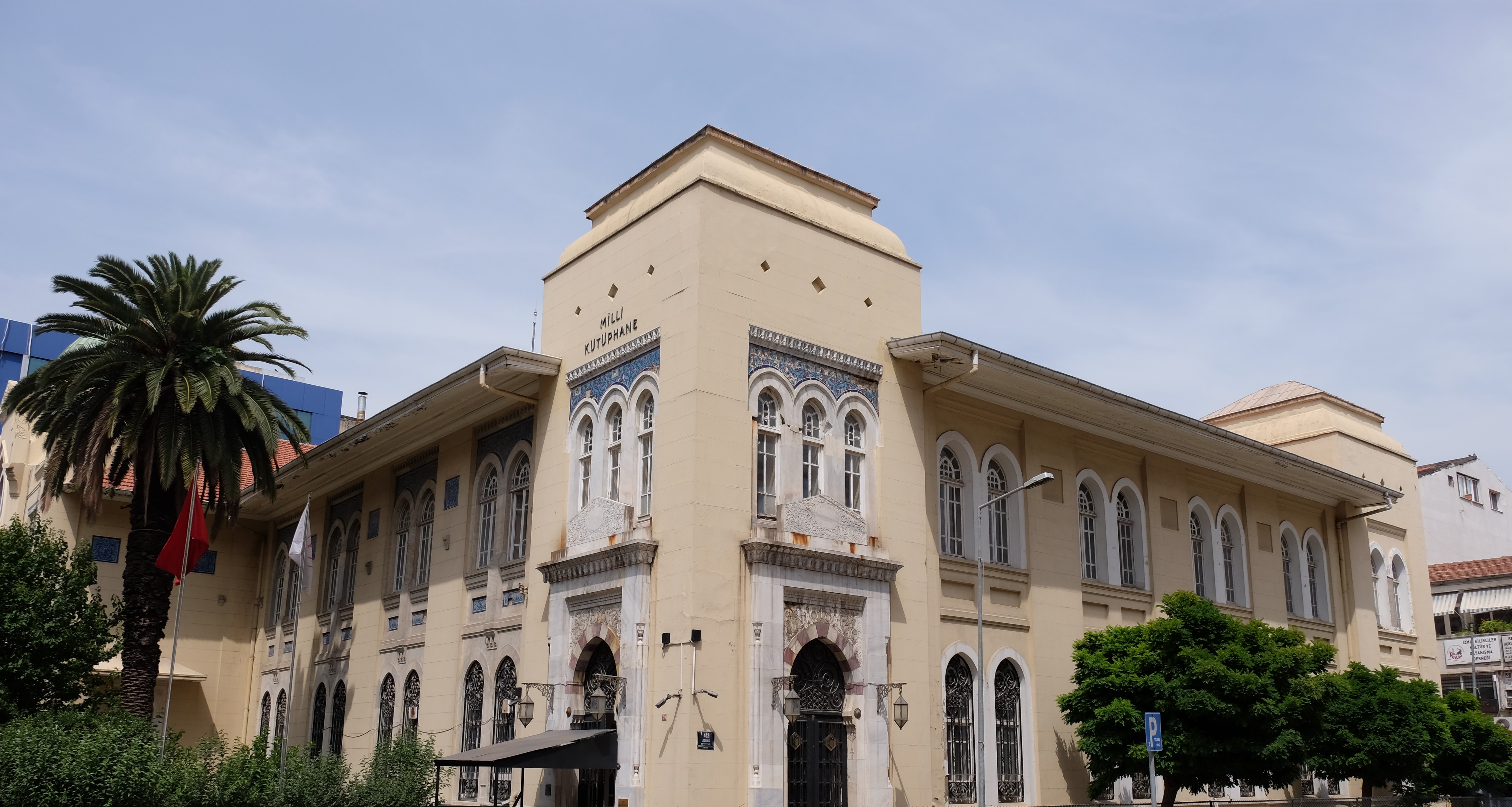
Beyler (The Gentlemen's) Street
The three streets in Kemeraltı, where the city's most prominent families would dwell, were named Beyler and divided into three sections; the first, the second, and the third. Although the streets of Beyler are no longer as lively as they used to be, they remain important in the city's memory. In the 20th century, Turkish-owned newspapers, publishing houses, and printing houses were located along Beyler Street. The National Library was first opened in Ahmet Ağa Mansion in the Second Beyler. Today, the mansion serves as the Department of Historical, Environmental, and Cultural Heritage following the restoration works of the İzmir Metropolitan Municipality. In the Second Beyler, the historical texture was re-discovered through the works carried out by the Metropolitan Municipality, reminding the city dwellers of the beauty of Beyler once again.
Salepçioğlu Mosque is rich in baroque influences with its extraordinary architecture. It was commissioned by Salepcioglu Haci Ahmet Efendi and opened for worship in 1906. The mosque, which used green-colored smooth-cut stone and white marble blocks in its construction, reflects Orientalist influences on ornamental elements. The minaret of Salepçioglu Mosque was built independently of the mosque, the lower floor was designed to serve as a madrasah and school, and the upper floor was designed as a mosque.
.jpg)
Hamza Rüstem Passageway, one of the oldest passageways in Kemeraltı, was first believed to have been built as an inn under the name of Emirler in the middle of the 19th century. The inn was later converted into a two-story reinforced concrete passageway in 1922. The passageway was home to shirt shop repairers mainly focused on radios that had just begun to see use in the city, a photography shop belonging to Hamza Rüstem, shops selling photography equipment, and a few printing houses. Emirler Market was later named after Hamza Rüstem, who was the first Muslim Turkish photographer known to set up a photography studio in İzmir. In 1925, he opened the photography shop, which remains open to this day in the passageway. The photographs of Hamza Rüstem, who never gave up his passion for photography until his 90s, have an important place not only in the visual history of İzmir but also in the history of Turkish photography.

The place, which hosts antique shops and second-hand bookstores under the historically covered bazaar structure, has become a place frequented by antique lovers and collectors in Kemeraltı. The second-hand booksellers offer books that still carry the smell of the period they were written, while the antique shops host artifacts and items that once saw their prime in our country and became the object of many stories. You can attend antique auctions or design markets on certain days at the Antique Dealers' Bazaar.
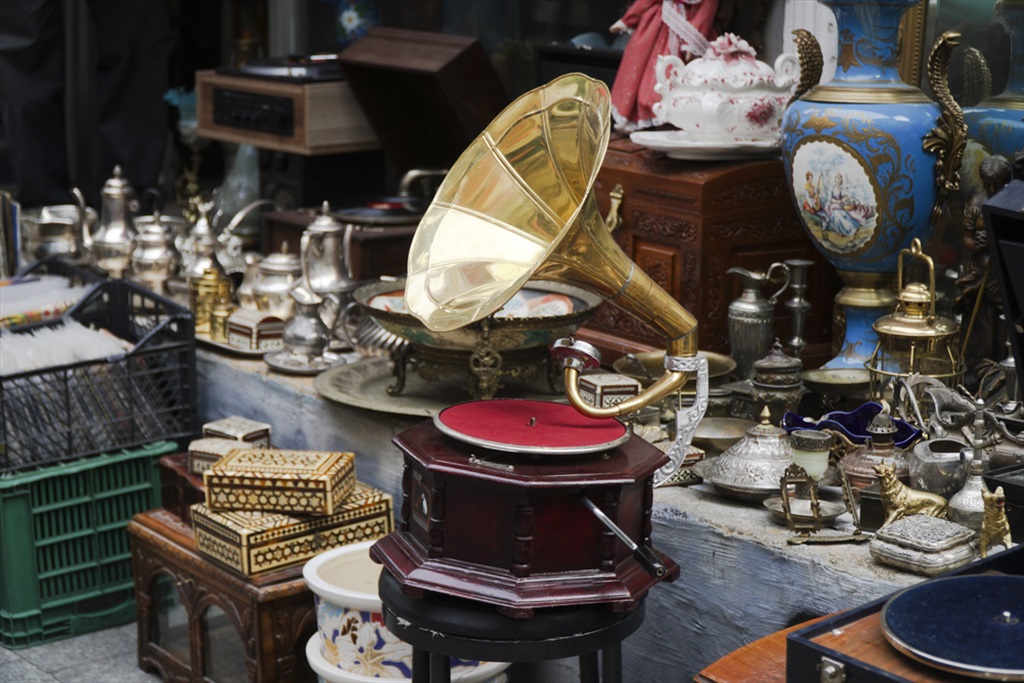
Abacıoğlu Inn is one of the inns subsequently built in the area, encouraged by the increasing port trade in the 18th century. Abacızade Hacı Mustafa Ağa commissioned it in the early 18th century. The building was used for accommodation, trade, and storage purposes and was located within the Jewish quarters, adjacent to the cellar of the Greek church. Featuring nine rooms and seven lower basements at the time of its construction, Abacioglu Inn earned the Respect for History – Local Conservation Competition organized by the İzmir Metropolitan Municipality and Philippe Rotthier European Prize for Architecture awards with its restoration work that was completed in 2007. You can enjoy the historical inn at one of the nice food & beverage spots in the colorful two-story spaces overlooking its spacious tree-lined courtyard.
We are in the place currently known as Yeşildirek Passage and formerly known as Yeşildirek Bathhouse. The bathhouse, reportedly owned by the charitable foundation of the famous Ottoman Grand Vizier Merzifonlu Kara Mustafa Pasha, was heated using wood fire in its early years. In the following years, coal replaced wood as the fuel source for Yesildirek Bathhouse, resulting in its canal bursting due to the high temperature. After becoming dysfunctional, the bathhouse has come into use as a passageway since 1963. After entering the passageway, you only need to take a simple look to understand that the building used to be a bathhouse. The colorful round, hexagonal and star-shaped skylights on the dome of the hot room take you down the memory lane of its old days.
The exquisite architecture of the Kestanepazarı Mosque puts it among the city's most unique and beautiful mosquesKızıl İbrahim Masjid, also known as Eminzade Hacı Mehmet Ağa and previously located in the same place, was converted into a mosque in 1731. After a severe earthquake in 1868, Mısırlı Hacı Hüseyin Nuri Efendi had the mosque rebuilt into its current form. Later, a school, library, and fountain were added next to the mosque. Until recently, the inscription at the mosque's entrance, a quote from Evliya Çelebi's Travel Book, was assumed to refer to this mosque while it had been written about the Kemeraltı Mosque. On the lower floor of the Kestanepazarı Mosque, which has walls made of cut stone, several shops share a similar two-story layout with various other monumental mosques in Kemeraltı.
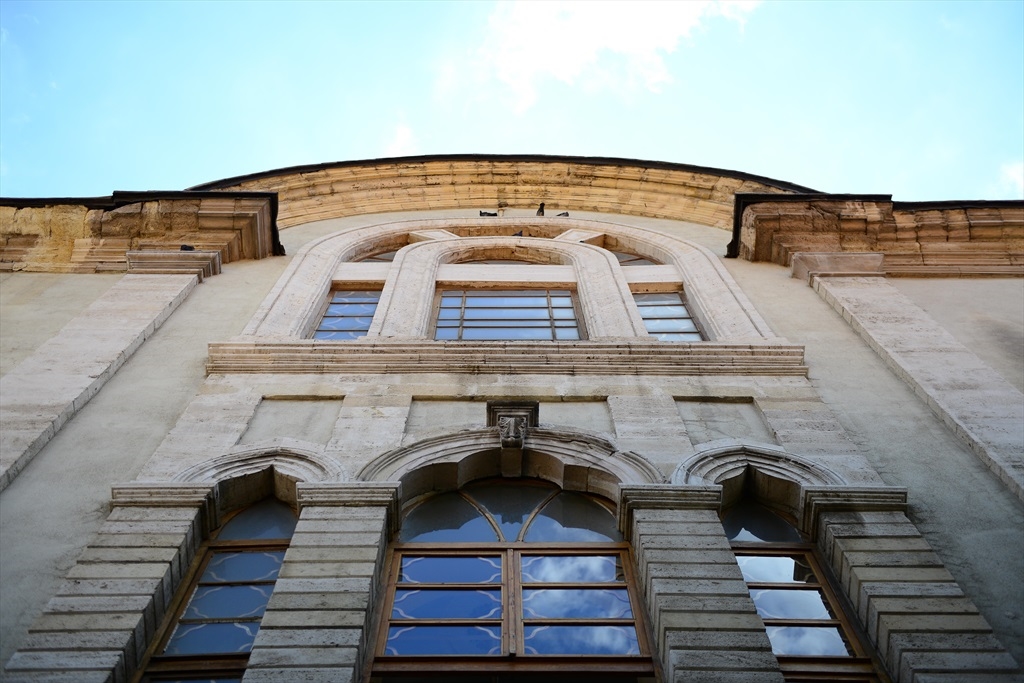
The inn, which also has an exit connecting to Havra Street and currently operates under the name L'agora, is among the one-of-a-kind stops to have some rest and visualize history amidst its boutique hotel, restaurant, and various shops. Commissioned by the Karaosmanoğlu family, cotton exporters who traded toEurope in the early 18th century, the inn was originally made of wood. Home to many artisans such as tinsmiths, whitesmiths, and coppersmiths throughout history, the inn was reconstructed in 2016 in the exact image of its original form.
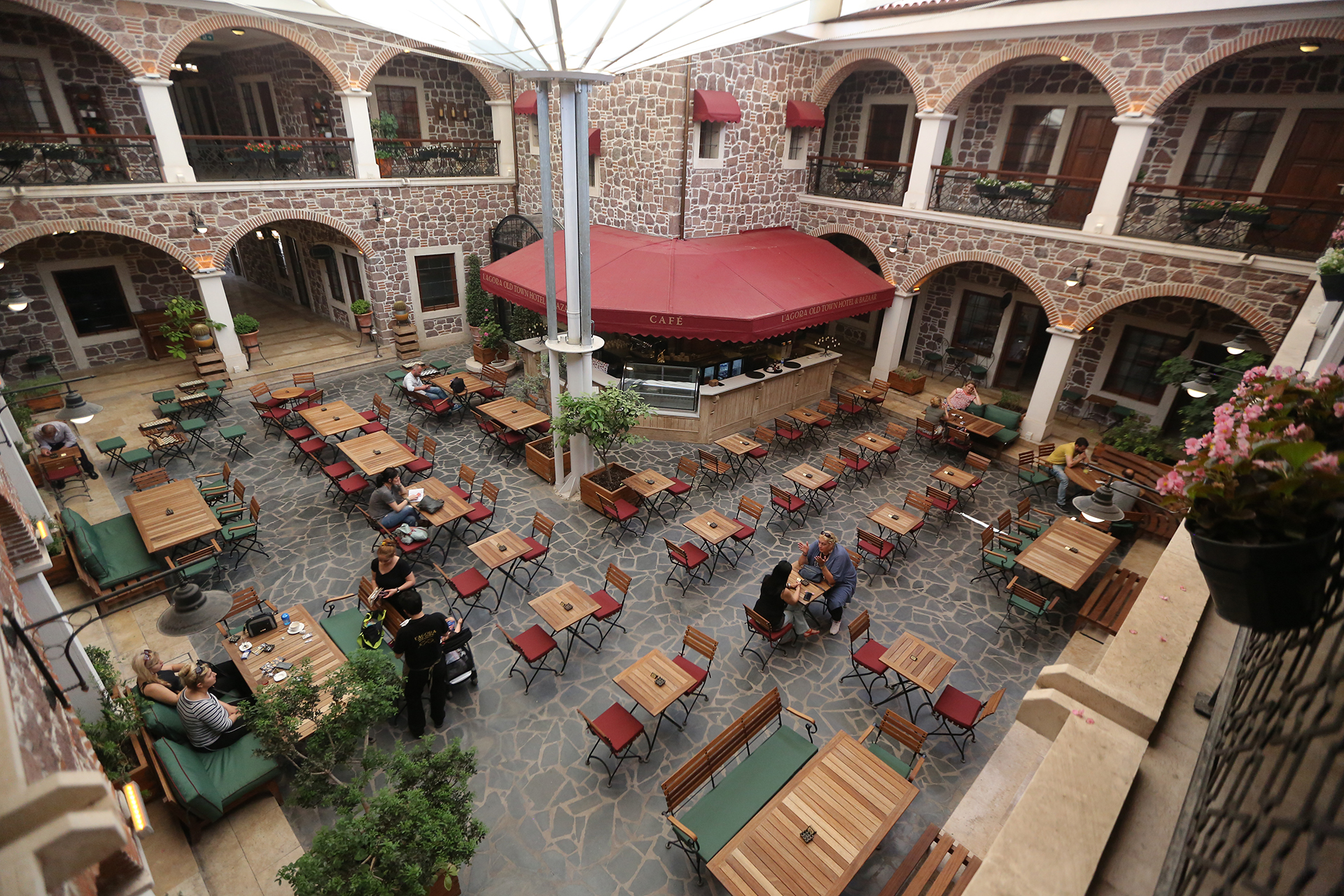
With the foundation of the State of Israel, a large portion of the Jewish population of İzmir left the city. The Jewish community, whose presence in İzmir and its vicinity is thought to date back to the Roman period, appears to have resided in small numbers in the city until the 16th century. With a series of immigrants from various cities and countries, especially Portugal and Spain, especially since the last quarter of the 16th century, the Jewish population settled in and around Havra Street. It became an important part of the city by establishing the Juderia, the Jewish quarter. Nine synagogues, four of which were built adjacent to each other, and the rabbinical building is surrounding the street form an architectural complex that is unique today. The sources from the 19th century reveal that Havra Street featured Greek and Jewish wineries, as well as a Turkish bath and a Greek pharmacy. On the street, traces of the historic winery can be seen from the grape and vine leaf motifs engraved on the keystone at the arched entrance. Although the street has lost its distinctive character, it retains its commercial texture and vivacious ambiance.
.jpg)
Most of the ruins that have survived from the Agora of the ancient city of Smyrna, which was founded in the late 4th century BC after Alexander the Great, date back to the Roman Period Agora that was built after the earthquake of 178 AD. To honor the Roman Emperor Marcus Aurelius and his wife Faustina, who greatly supported the revitalization of Smyrna, a monumental gate with two arches bearing their portraits was built in the city. Faustina Gate remains one of the most striking structures of the Agora today. One of the largest agoras in the city center, Smyrna Agora has tremendous historical and cultural value, with its civil Basilica containing the wealthiest Greek graffiti collection in the world. Archaeological excavations at the Agora, located in the heart of the ancient city center, which was first started in 1933, were restarted in 2007. Since then, the excavation has continued under Dr. Akın Ersoy's direction. In the excavations carried out to date, the Western Porch surrounding the courtyard inside the İzmir Agora, the Basilica used in judicial and commercial works, two public buildings called the City Council and the Mosaic Building, and the Roman bath has been uncovered.
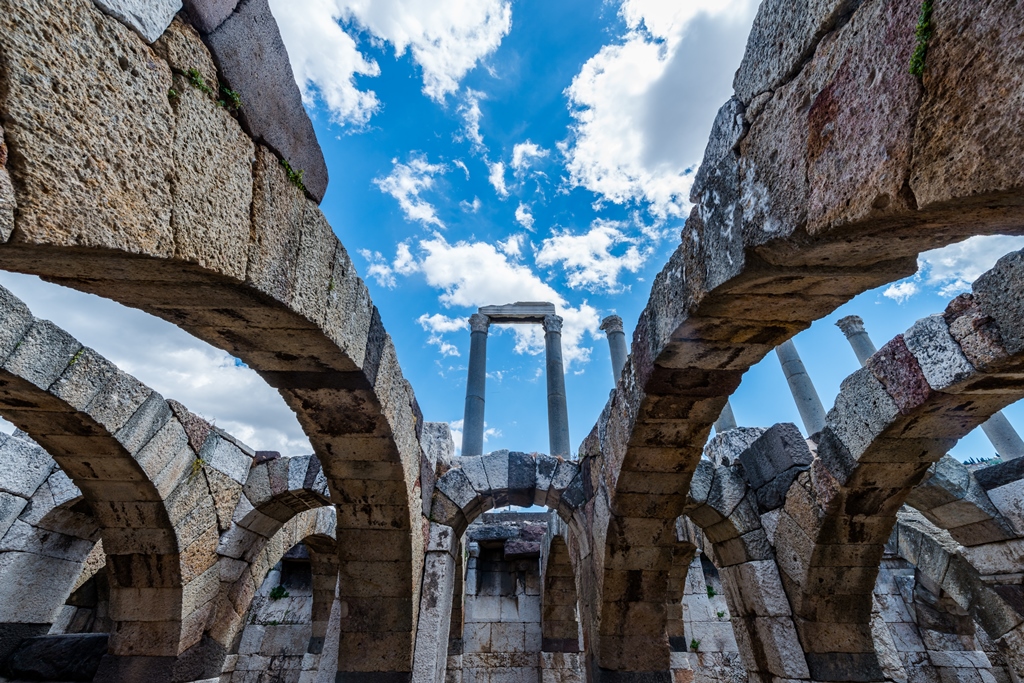
Click here to see Kemeraltı Photo Walking Route on the map!
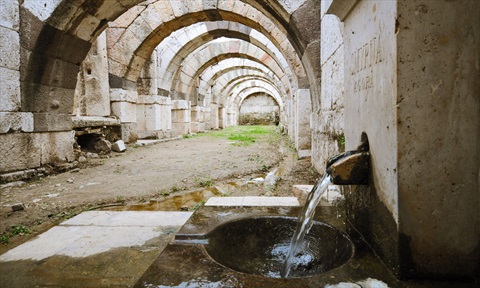
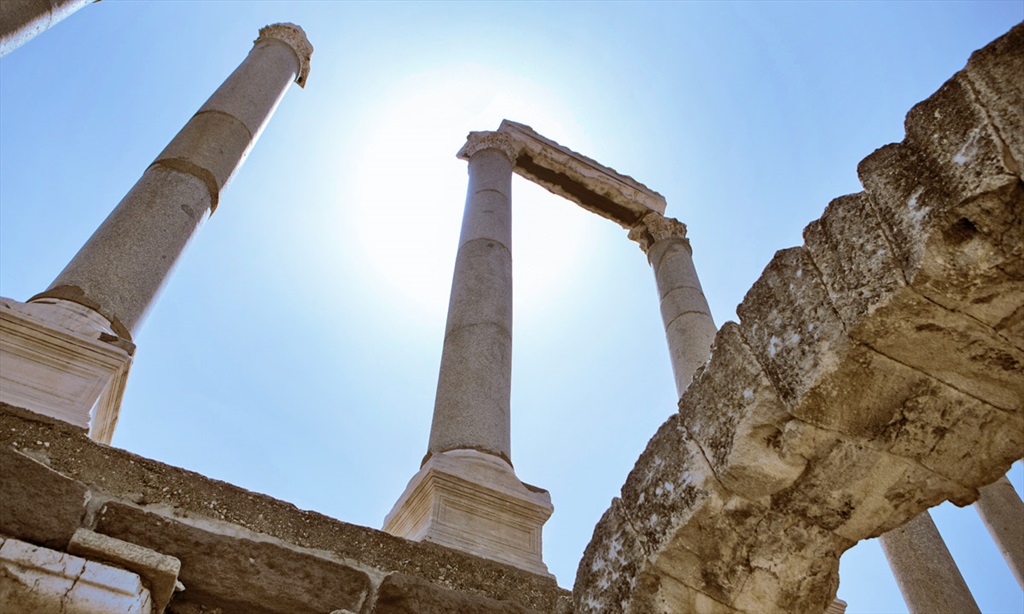
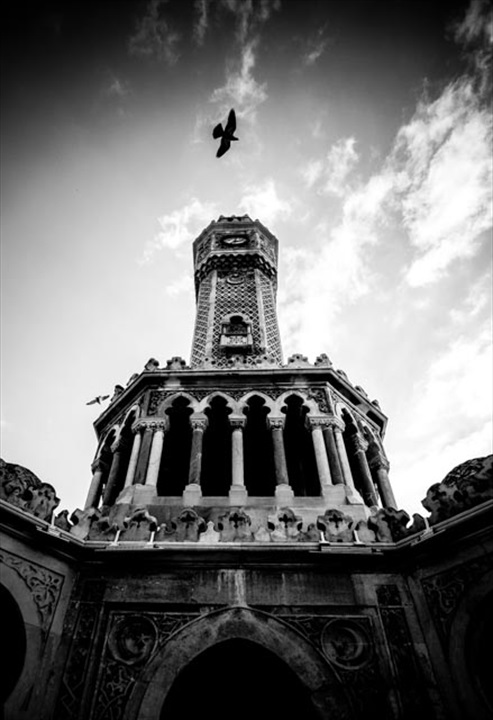


Comments
No comment left, would you like to comment?